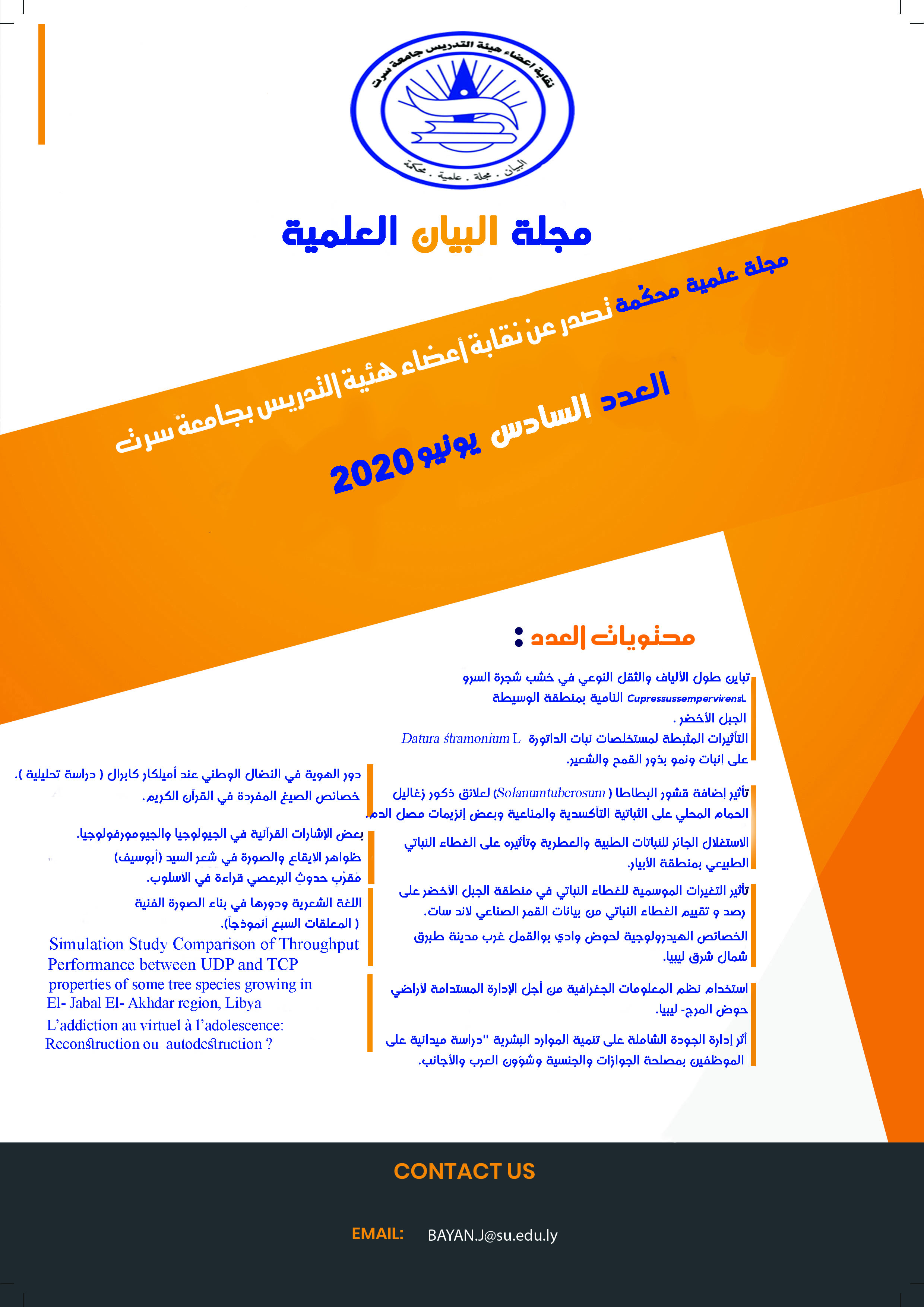Overexploitation of medicinal and aromatic plants and its effect on natural vegetation in Al- Abyar region
Abstract
The aims of this study were to limit the medicinal and aromatic plants targeted by the local people, to estimate annual sales and prices of these species and to evaluate the effect of this activity on medicinal aromatic plant species in the future. The study included Al-Abyar area, where spices shops or stores werevisited and the plants sold were identified. The study revealed that there were more than 39 plant species commonly used in folk medicine spice business by local people. The study also showed that there were 12 species of medicinal and aromatic plants had the highest sales and consumption directly collected from the natural vegetation of the study area and sold in species shops; which are represented by Artemisiarherba- alba Asso., Chamomillaaurea (Loefl) Gay ex Cosson & Kralik., Rosmarinusofficinalis L., Salviafruticosa L., Thymuscapitatus (L.) Hoffm & Link., Globulariaalypum L., Ziziphuslotus (L.) Lam., Helichrysumstoechas (L.) Moench.And Teucriumpolium L., The results also show that the highest quantities sold were from Thymuscapitatus (L) Hoffm & Link, Rosmarinusofficinalis L and SalviafruticosaMill.Which reached to 240, 250 and 125 kg respectively and achieved the highest returns in its sales, which reached 6000, 5000 and 3125 LD annually respectively. While the capparisSpinosa Linn. Was loest selling as its annual return was 400 LD annually.













